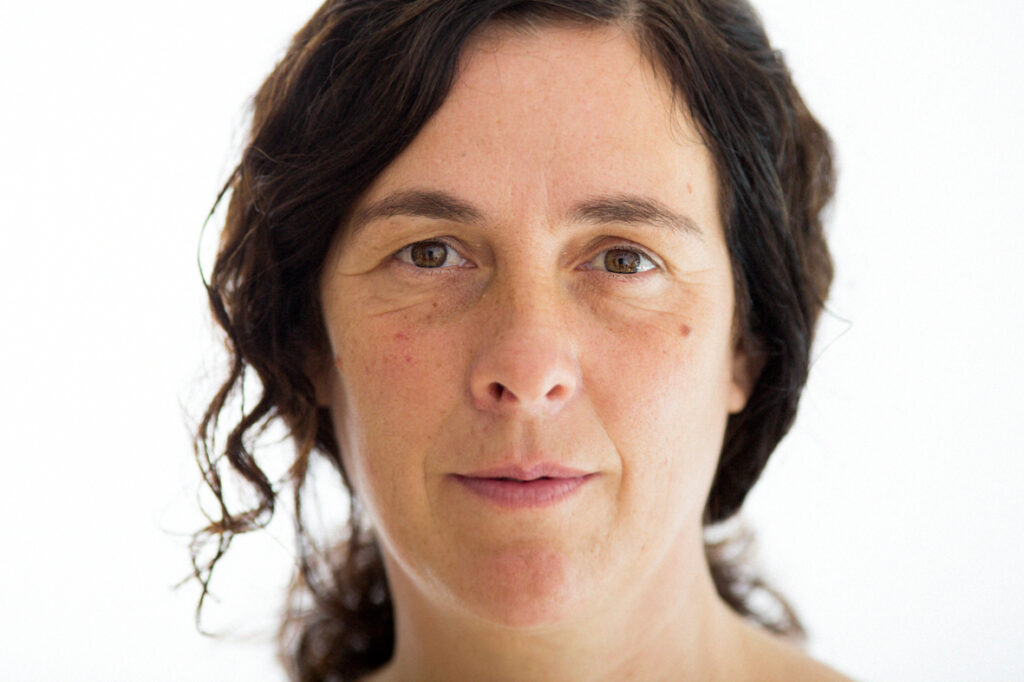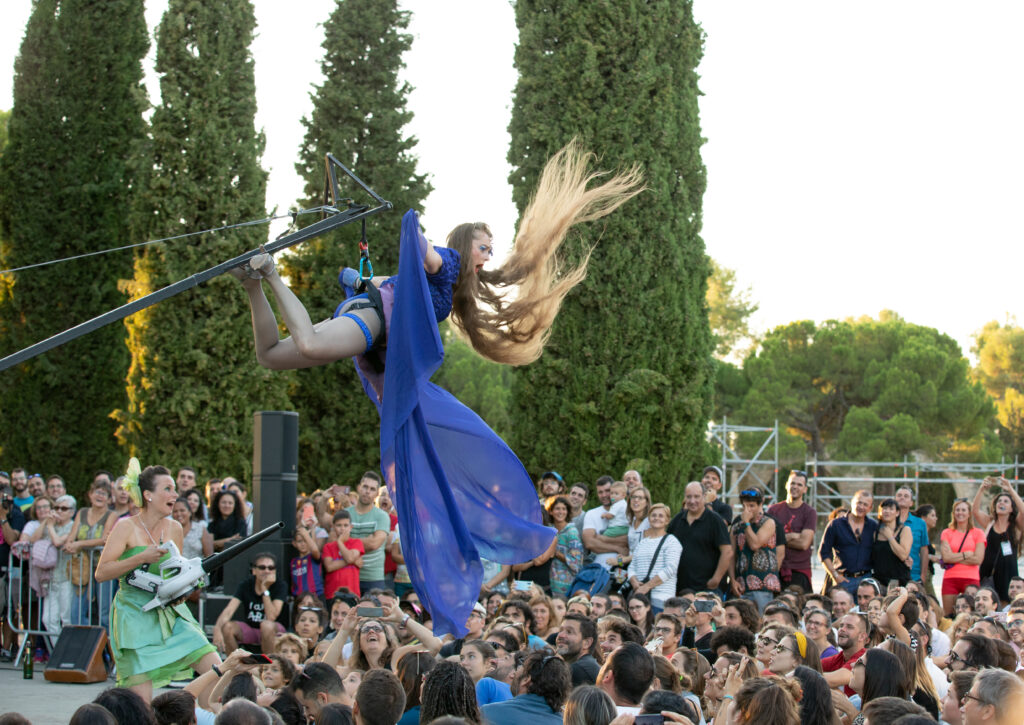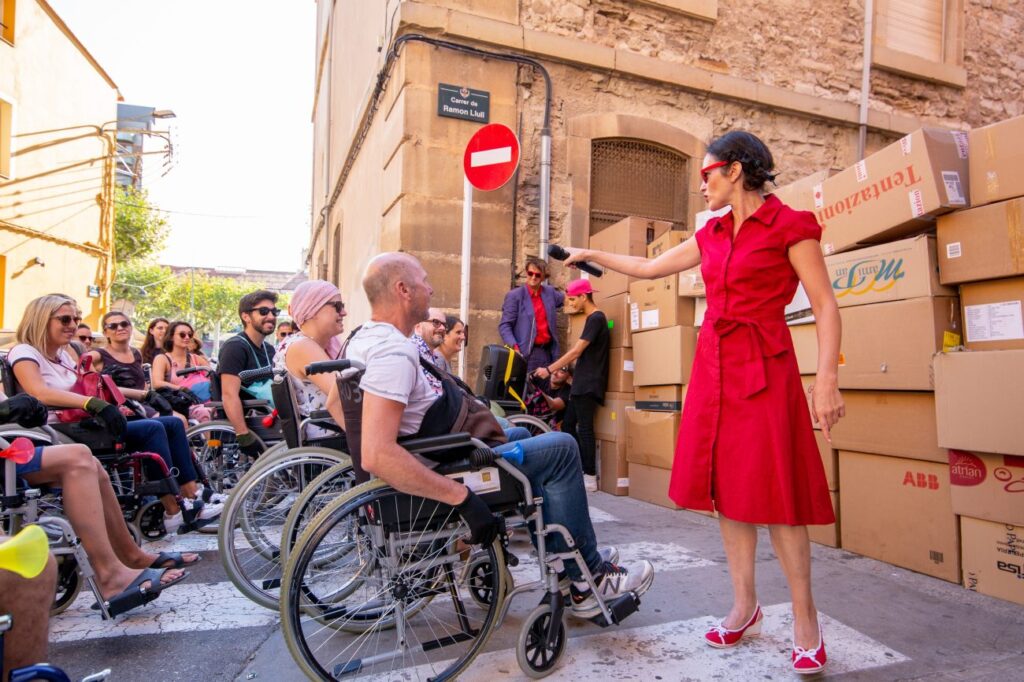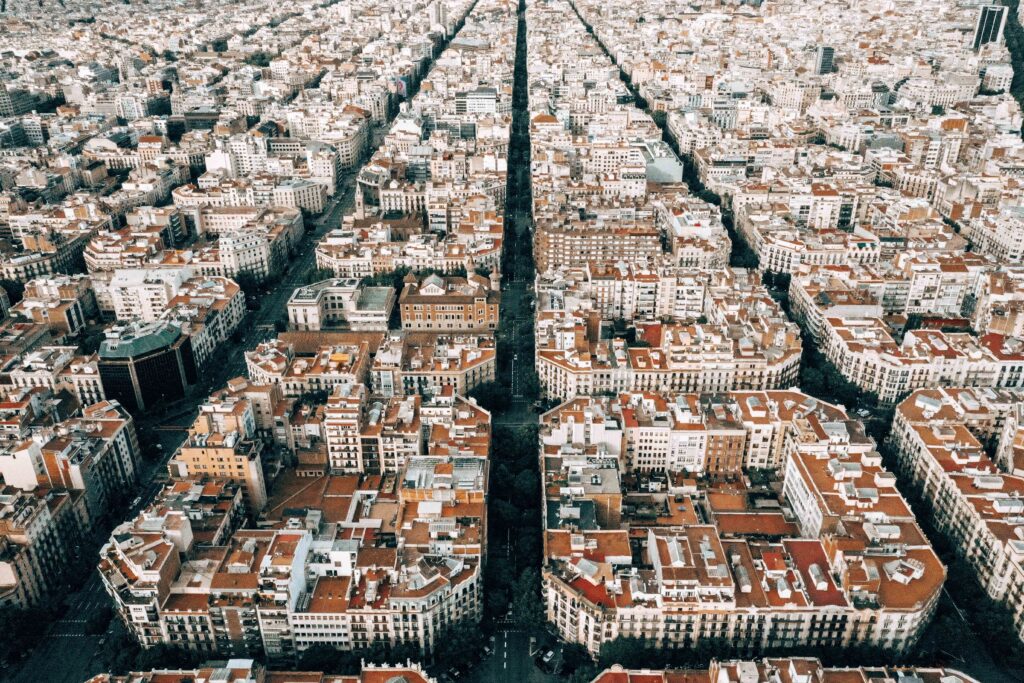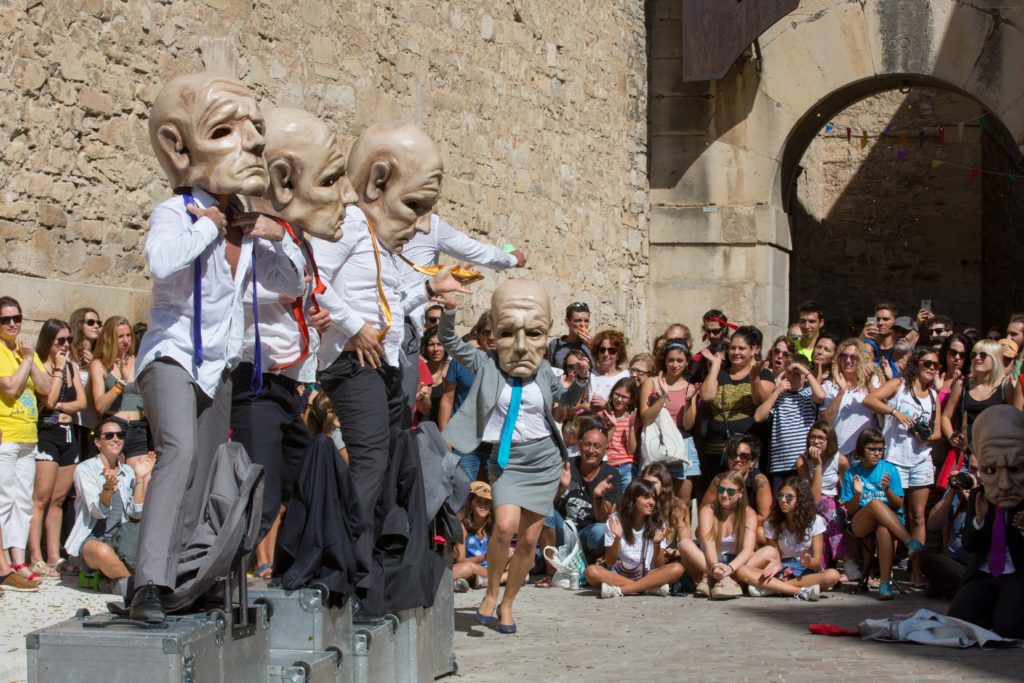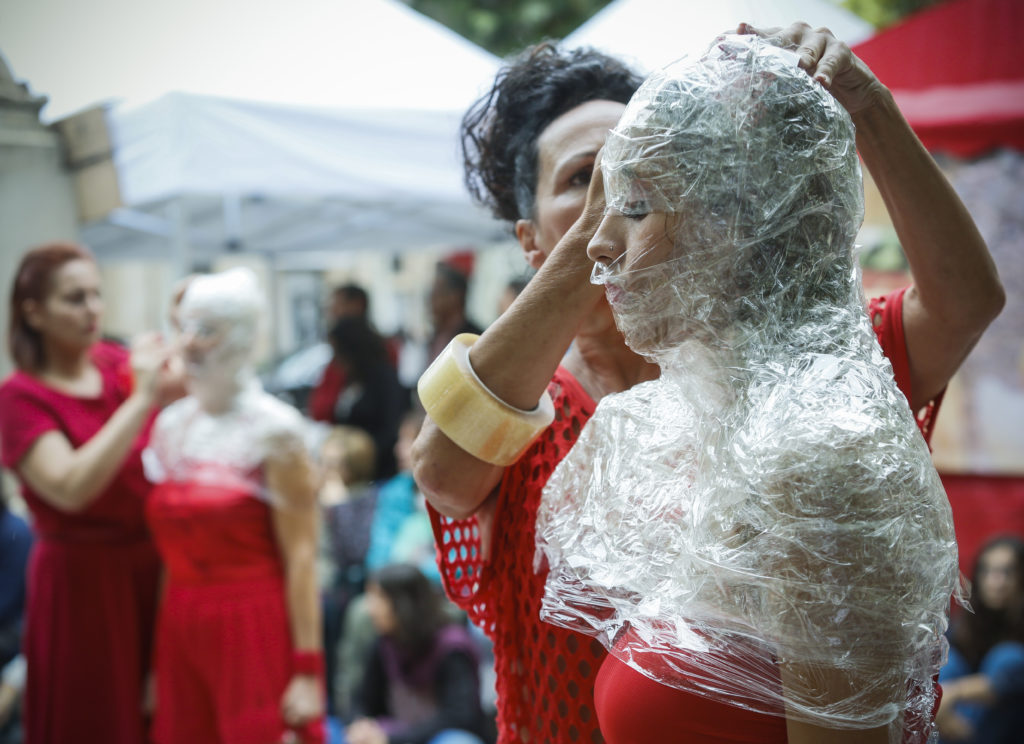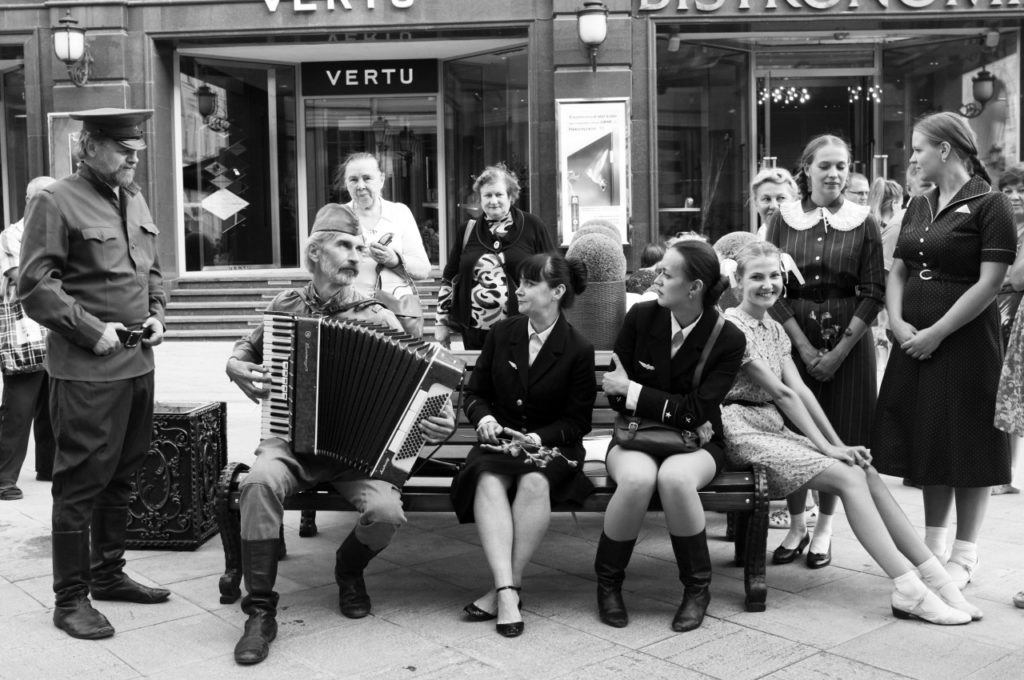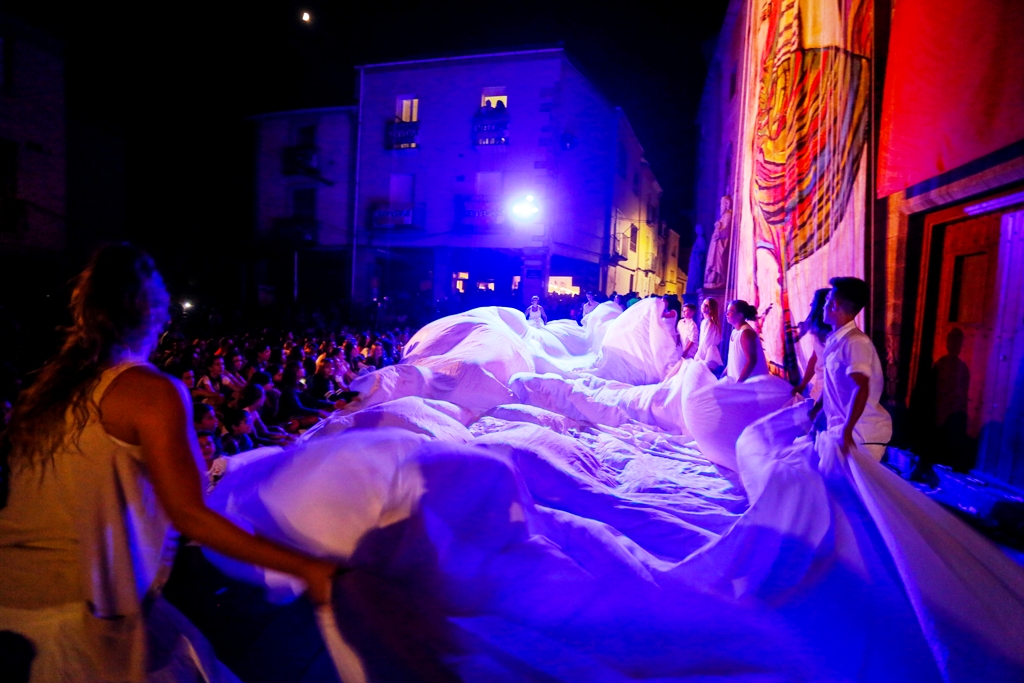-
Art comunitari, Arts de carrer, Hivernem 18/12/2020 Àrea de comunicació
Projecte d’espai públic SOS
Per Ada Vilaró
El 2020 es va fer efectiva la primera convocatòria del programa Hivernem, impulsat per FiraTàrrega i l’Institut Ramon Llull amb l’objectiu de fomentar la recerca en l’escriptura de creacions artístiques vinculades a les arts escèniques i a l’espai públic. Ada Vilaró, amb un projecte sobre els efectes del canvi climàtic i Jordi Aspa amb una recerca sobre un nou paradigma per al riure van ser els guanyadors d’aquesta convocatòria. Publicarem aquí en dues entregues quin és el punt de partida de les seves recerques, que tenen com a finalitat l’escriptura d’una dramatúrgia. Comencem amb Ada Vilaró.
-
Arts de carrer 28/09/2020 Àrea de comunicació
El arte callejero, los no lugares y la nada
Por Pau Llacuna i Ortínez
Creo que podemos decir que el arte callejero ha sido unos de los instrumentos más utilizados por las administraciones cuando su objeto era organizar un acto importante y llamativo; celebraciones de aniversarios, centenarios, milenios, grandes eventos o, simplemente, las fiestas patronales de cualquier pueblo modesto; se han servido del teatro callejero para lograr llamar la atención.
-
Art inclusiu, Arts de carrer, FiraTarrega, Innovació, Suport a la Creació 13/05/2020 Àrea de comunicació
El context
Per Lau Delgado Vilanova
Director Executiu de FiraTàrrega
L’emergència causada per l’epidèmia del Covid-19 ha suposat un gran impacte en tots els àmbits de la nostra societat. I, lamentablement, el cultural no n’ha estat una excepció. Els agents del sector estan buscant maneres de fer front a aquest impacte al temps que intenten concebre com han de canviar el seu model, la seva manera de ser i funcionar, per ser al més útils possible al sector i al ciutadà. Aquest fet està accelerant els processos de canvi o transformació en la missió, els objectius i les metodologies de funcionament de molts equipaments, esdeveniments i institucions culturals. Alguns d’aquests canvis hauran estat circumstancials, però d’altres, de ben segur, es consolidaran amb normalitat.
-
Arts de carrer, FiraTarrega, Urbanisme 06/04/2020 Àrea de comunicació
L’èxit internacional d’unes arts de carrer ingovernables
Catalunya és un dels màxims exportadors mundials de creacions en arts de carrer i espai públic. Però, quines en són les raons? Què explica aquest èxit i reconeixement internacional? Anna Giribet, directora de FiraTàrrega, ens ho explica en aquest article.
En la conversa inaugural de FiraTàrrega 2019, Xavier Antich deia que «l’espai públic és el lloc que els cossos acaben transformant; per això l’espai públic és literalment ingovernable». La vitalitat i riquesa de l’escena actual de les arts de carrer catalanes és un fet —reconegut internacionalment—, i per entendre-ho és imprescindible començar amb una aproximació des de l’urbanisme.
George-Eugèn Haussman, (polític, 1809-1891) va convertir París en una xarxa al servei d’una ciutat en moviment. Frederik Law Olmsted (arquitecte paisatgista, 1822-1903) va dissenyar un entorn rural com Central Park al cor de Nova York. Ildefons Cerdà (urbanista, 1815-1876) va idear un teixit urbanístic a Barcelona. Tres figures de l’època moderna que van canviar les seves ciutats. Més enllà de la forma, es van preocupar per la vida de la ciutat, la convivència. Haussman lluitava per aconseguir una ciutat accessible, Olmsted per una ciutat sociable i Cerdà somiava amb una ciutat igualitària. Accessible, sociable i igualitària. Llegir més…
-
Arts de carrer 18/09/2018 Àrea de comunicació
Rellegir el carrer
Per Jordi Duran i Roldós, director artístic de FiraTàrrega
El carrer com a marc, presó o espai de resistència. I les arts escèniques com a motor de canvi social, evasió o propaganda. A FiraTàrrega rellegim l’espai públic. Una vegada i una altra, des de fa molts anys. Ens demanem per la vigència, la necessitat o el sentit de les arts de carrer. Ens preocupa la seva supervivència i el seu lloc al món contemporani. I no llencem la tovallola. Una fira, un festival, un teatre són espais protegits on se’ns permet somniar. Però quin lloc ocupa el somni en el nostre dia a dia? Quins permisos ens cal demanar? A FiraTàrrega també busquem sobreviure al context i a la institució pròpia, així com a les jerarquies del codi escènic i als barrots que representen la rutina o saber-se coneixedor d’alguna cosa. Ensumar, gratar, tastar el carrer per ser-ne conscients. Escoltar el seu batec, sentir-lo. Això és el que anhelem. Descobrir a fons el seu passat i entendre el seu present. Saber-ne més. No perquè hàgim de canviar res, sinó pel dret que tenim les persones a saber del món que trepitgem, pel dret que tenim les persones a somniar i a construir-nos un futur coneixedors de les nostres arrels, sabent per què actuem. No és només una manera de respectar i reconèixer la ciutat on vivim, és una manera de respectar i reconèixer aquell que l’habita. O la recorre amb nosaltres mentre caminem.
-
Art comunitari, Art inclusiu, Arts de carrer, Comunitat, FiraTarrega, Públics, Suport a la Creació 30/05/2018 Àrea de comunicació
Algo tiene la calle
Dimensiones de un hábitat creativo
por Oriol Martí i Sambola, Director ejecutivo de FiraTàrrega
La calle: tratar de describir la calle, de qué está hecha, para qué sirve
Georges PérecCrear en el espacio público es hablar con un lenguaje propio, desnudo, esencial y sincero. Y mucho más. Esto es lo que creo haber aprendido a lo largo de los años y lo que aquí propongo desarrollar desde lo teórico y lo conceptual.
Me refiero a las particularidades consustanciales de las artes escénicas (en mayor medida, por cercanía profesional) y de las artes plásticas, la música, la escultura o la instalación realizadas expresamente en la calle, la plaza, la travesía, el pasaje, el bulevar o la rotonda.
¿Cuáles son las particularidades de la calle cuando la entendemos como espacio creativo? Para afrontar esta cuestión es necesario un inicio antitético: se entiende cómo es la calle analizando cómo no es el recinto. Y hay análisis no antitético, no comparativo. Lo veremos también.
Este artículo identifica seis aproximaciones definitorias de la calle creativa: la dimensión urbanística, la política, la artística, la simbólica, la tecnológica y la atmosférica, presentadas a través de sus porqués, sus relatos y sus ejemplos. Llegir més…
-
Arts de carrer, Arts escèniques, Comunitat, FiraTarrega 12/06/2017 Àrea de comunicació
FiraTàrrega, a market but still a festival
Per Iryna Malinskaya, alumna del Màster en Gestió Cultural de la Universitat Internacional de Catalunya (UIC) iryshkamal@gmail.com
When getting an opportunity to be involved in organizational process of a performing arts festival, you find yourself thinking: what do I know about concepts and ideas laying deep under the surface? Are these implications obvious to the audience? Have I ever, being a spectator, realized a reason driving to partake in an organized crowded chaos?…
Launched mainly as a popular street festival, today the FiraTàrrega is the international market of performing arts, a place for promotion of new artists, creation, exhibition and training, a meeting point for professionals. But it remains a festivity for the public embodying originally rooted meanings of a festival as public joy and abstinence from daily life simply because of the so-called paradox of a spectator as Jacques Rancière stated – there is no theatre without a spectator.
-
Arts de carrer, Arts escèniques, Espectacles, Festivals, FiraTarrega, Suport a la Creació 06/03/2017 Àrea de comunicació
Poetry in action. Or some ways to go when something first starts
By Eva Marichalar-Freixa. Creator, arts based methods researcher@virginiafochs
Aquest text és una justificació i un document de partida del projecte internacional A Ferida / La Herida, coproduït entre el festival Imaginarius i FiraTàrrega que té una clara voluntat de diàleg artístic entre creadors catalans i portuguesos al voltant del concepte de la memòria. L’espectacle resultant s’exhibirà a l’edició 2017 de FiraTàrrega.
Here is some first data: City of Tàrrega, 2016/11/20 – 2016/11/23. During these days, Fira Tàrrega and Festival Imaginarius brought together a group of Catalan and Portuguese artists to set up the basis of a new project for research and co-creation between both countries; each artist was asked to create and perform a solo piece that would then be a part of a dialogue between them all. Some more data to continue: Our memories as a keystone to trigger conversations between two countries that have grown up turning their back on each other. Our memories as an opportunity for each artist to explore beyond his/her previous boundaries, simultaneously enhancing personal singularity. Our memories as a collective place where to dig into intimacy, so that we can then put them into conversation. This coproduction between both festivals will see its first premiere next spring at Festival Imaginarius, and then again in a new setting at FiraTàrrega in September. Confirmed artists are Rui Paixão, Catarina Campos, Alba Torres, Pau Masaló Llorà, Quim Giron Figuerola, and artistic director Julieta Aurora Santos.
On that first intensive meeting back in November, after being contacted by both festivals to outline and coach a methodology for this start-up encounter, I met the group with a very specific goal in mind: creating situations where active listening and favourable conditions for acknowledging one another could emerge. Each one should be introduced to the rest of the group by the means of the experience that was being shared by the whole group. Each one’s singularity should get the chance to be recognized at its right time during these first days, having also the opportunity to share previous personal creations and a professional profile that would then increase the possibilities of this collective project. Situations where outlined as in a three days dérive. I chased for those moments where to get lost and those where to be found, some moments to walk and some others to sit down around a table settled with some food and drinks, moments in solitude and moments to feel each other’s nearness, moments to talk to oneself and moments where to hold long and passionate conversations all together. Those where optimal moments to build up the foundational agreements of the whole process that was about to start: What was important for us to talk about? Which landscapes would take us and our stories in? What channels could facilitate growing up our conversations over the distance? How were we going to deal with production terms and conditions? It was important for me that each single decision to be made brought within the same melody, the same aesthetics that we could later on identify when enjoying the final performance first in Santa Maria da Feira and then in Tàrrega. During these days, I focused on those in-between spaces and times where nothing seems to happen, nevertheless, the most essential is being revealed. I cared for facilitating spaces and times where the group could build up a frame of mutual understanding where to go back to when feeling lost, a place where to feel at home quick after meeting again for intensive rehearsals before both premieres. After our kick-off encounter in Tàrrega, the team would be creating apart together; that is, they should start creating their solo pieces and the narrative that would join them all miles away from each other. Distance is a hard condition to play with; we knew that at some point, we would end up facing disenchantment. Therefore, building up a symbolic house which hosted the aesthetics of the relations braided on those first days was not only a key condition to overcome future concerns, but also the core of a previous need that would shift us from the pre-established idea of site-specific to that one of symbolic-specific, as I like to call it. It was during our stay in Tàrrega when we could feel the symbolic growing up strongly as a place, a house, a key idea, the heart of the creation. Translating that into words, the group decided to call it LA HERIDA / A FERIDA. Wounds came up as the formalization of all those agreements made during that first encounter, an appropriation of the concept that both festivals had asked us all to start up with, the official title and yet a symbolic space –that is, our home, our island, silence, a circle, a hole, flat and dimensional, a lived space, a space for deconstruction and construction, prohibition, omission, farce, disorder. Llegir més… -
Art inclusiu, Arts de carrer, Arts escèniques, Comunitat, Espectacles, Estudis, Festivals, FiraTarrega, Formació, Política cultural, Públics, Suport a la Creació 15/10/2016 Àrea de comunicació
FiraTàrrega i les arts de carrer o transformació, vivència, impacte i valor
Fent una mirada enrere als seus 36 anys de (pleníssima) vida, una de les particularitats de FiraTàrrega és que sempre ha estat en procés de transformació. Fer-ne un estat de la qüestió estàtic comporta el risc que la fotografia surti moguda. I no pas com a inconvenient, sinó com a virtut (pràcticament necessitat) que ha fet que avui, després d’aquell llunyà 1981 (primera edició de la Fira) aquesta celebració escènica sigui plenament vigent als nostres temps.
FiraTàrrega està en aquestes últimes edicions culminant un procés de transformació que s’explica pel desplegament, sofisticació i diversificació del foment i l’estímul de la creació catalana en general i de les arts de carrer en particular. Així, si històricament FiraTàrrega havia estat un espai d’exhibició escènica i de mercat professional, avui aquesta pota es complementa amb dos altres eixos: d’una banda, el Programa de Suport a la Creació, basat en coproduccions i residències creatives de projectes escènics que pel seu caràcter fràgil, singular i necessari (cal no oblidar la condició de servei públic de FiraTàrrega) requereixen d’un acompanyament artístic, tècnic, empresarial, comunicatiu, etc. D’altra banda, en els últims anys hem entès que el treball de laboratori de creativitats vinculades a l’espai públic i la no-convencionalitat també es pot canalitzar a través de la formació. D’aquí en sorgeixen els estudis propis de Màster i Postgrau nascuts el 2013 i que desenvolupem amb la complicitat i l’acompanyament de la Universitat de Lleida.
-
Art comunitari, Art inclusiu, Arts de carrer, Arts escèniques, Comunitat, Espectacles, FiraTarrega, General, Suport a la Creació 03/10/2016 Àrea de comunicació
Crònica d’Antonio Zúñiga sobre la participació de Carretera 45 a FiraTàrrega 2016
Fira Tarrega 2016, será inolvidable. Una experiencia que dejó huellas muy hondas en nuestras vidas. En nuestros cuerpos y en nuestras miradas. Participamos de algo que en estos tiempos se antoja único, pero que ha sido siempre el principal ingrediente del teatro, del encuentro entre personas que hacen comunidad. Un intercambio inusitado, entre lo viejo y conocido pero ahora olvidado y lo único real como esencial en el teatro: El abrazo de los desconocidos. El trabajo constante, en comunidad, en armonía de fiesta y en solidaridad humana, fue lo que marcó la participación de Carretera 45. De ahora en adelante, eso forma parte de nuestros enseres de viaje para utilizar en nuestros siguientes trabajos escénicos. En Fira 2016, convivieron muchas miradas entre seres humanos primero lejanos, que terminaron como amigos. Estrecharon vínculos y crearon arte popular. Arte del pueblo que nace del pueblo, sin demagogias. Llegir més…

